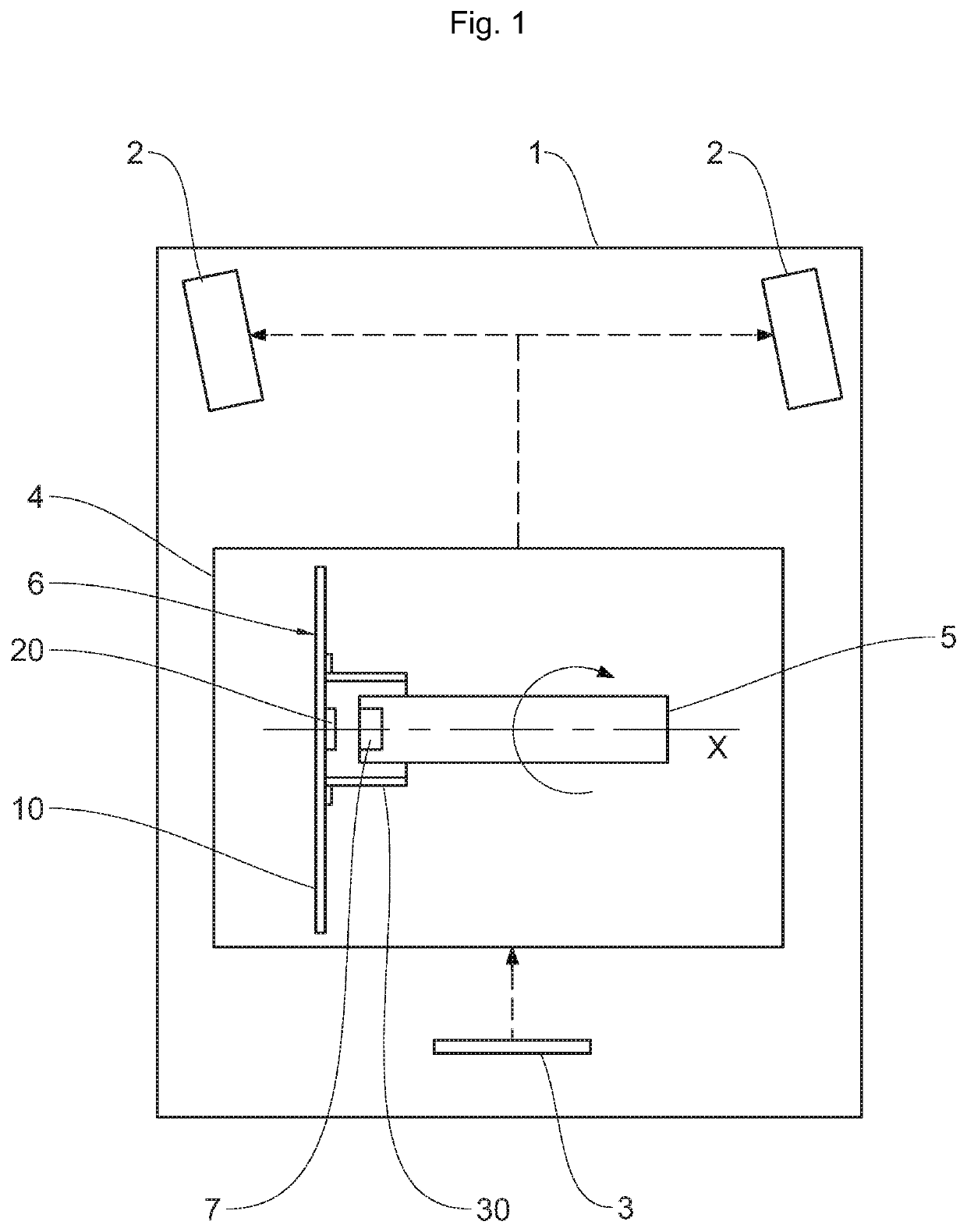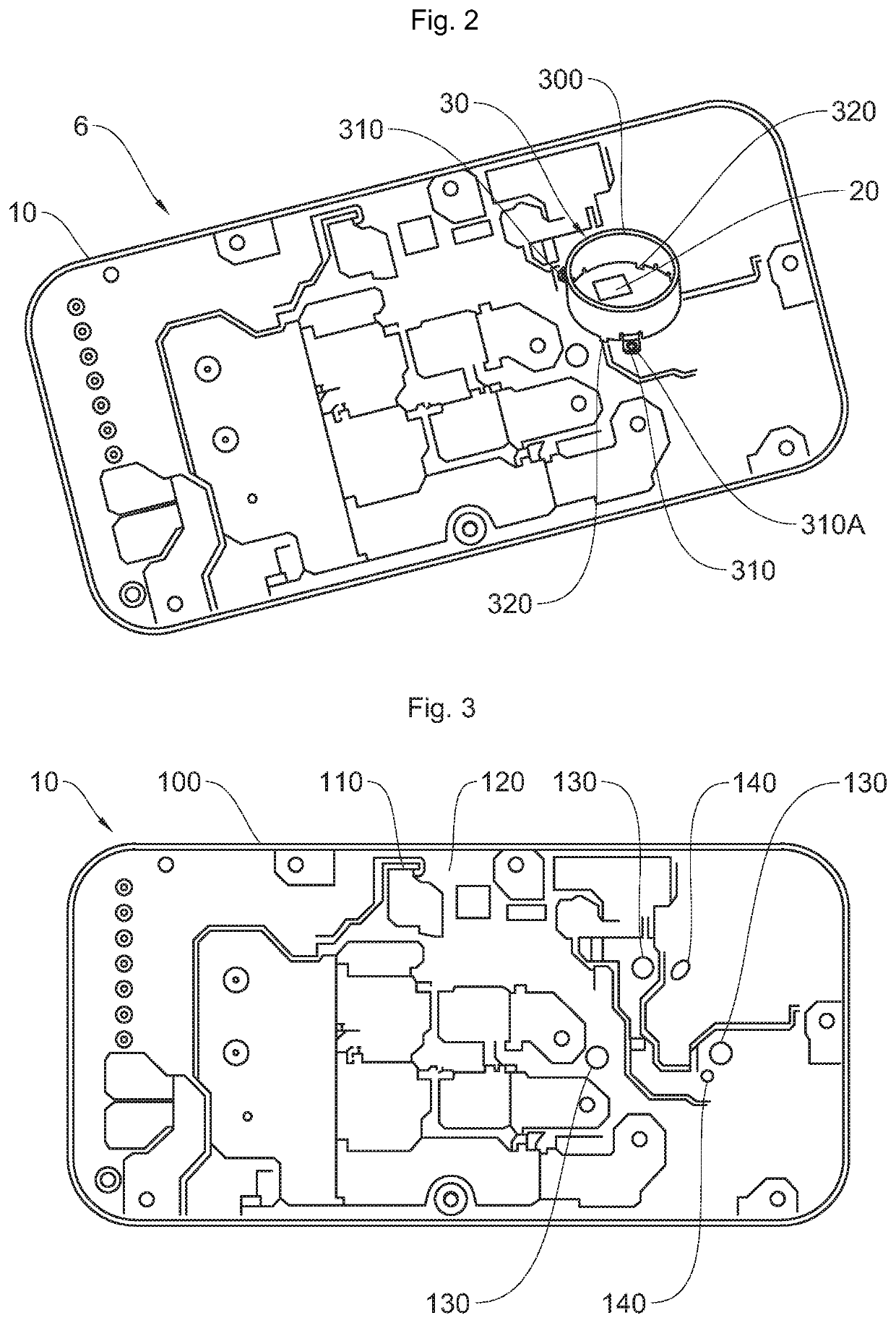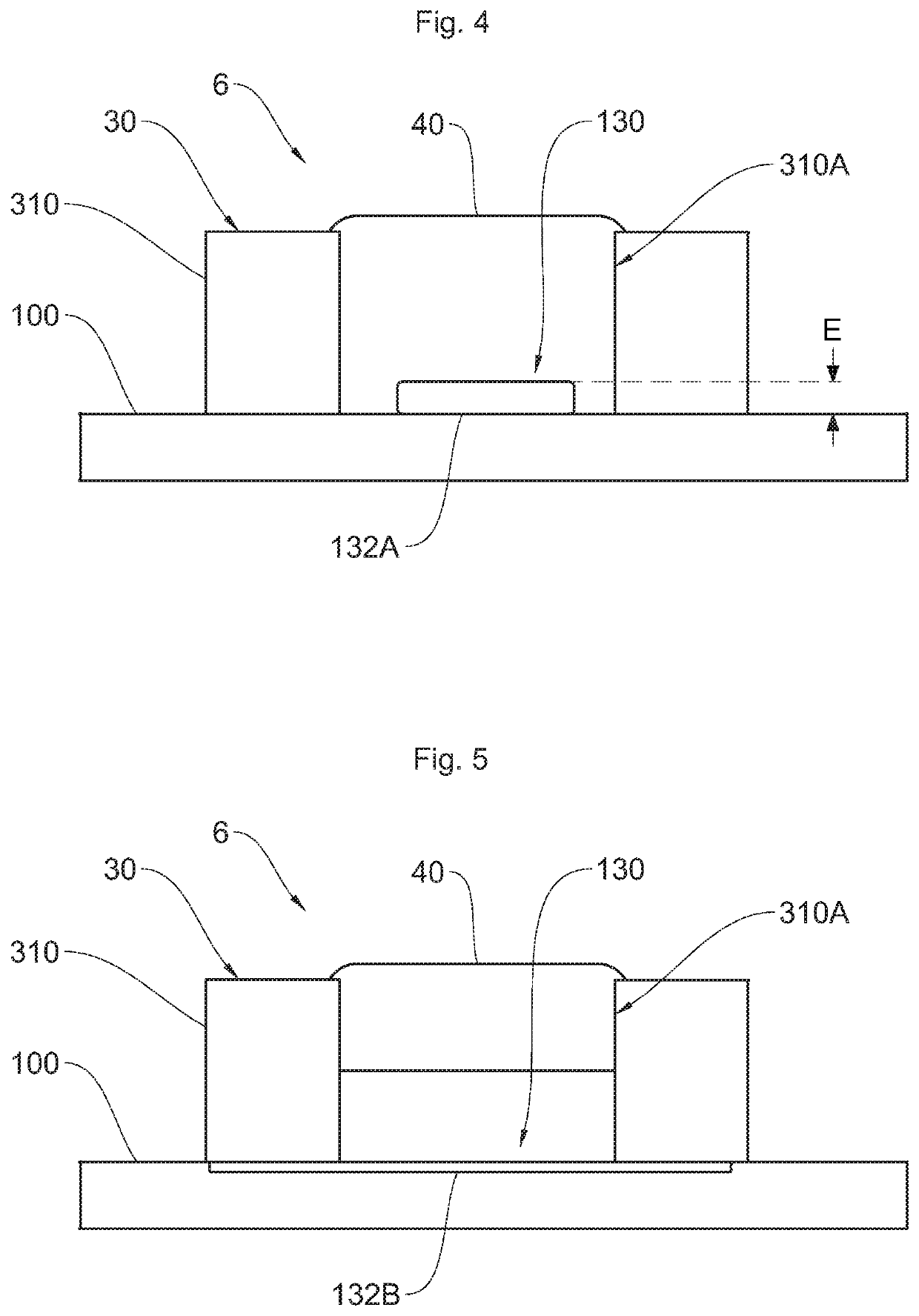Electronic device for determining the angular position of a motor vehicle shaft
a technology for motor vehicles and angular positions, applied in the field of position sensors, can solve the problems of significant drawbacks of complex printed circuit boards on which free space is limited, time-consuming and expensive welding operations necessary to fasten the tabs of the guide, and significant temperature increase on the electronic circui
- Summary
- Abstract
- Description
- Claims
- Application Information
AI Technical Summary
Benefits of technology
Problems solved by technology
Method used
Image
Examples
first embodiment
[0074]According to a first embodiment of a fastening area 130 illustrated in FIG. 4, the pad 132A has a diameter less than 1.5 mm. In other words, the pad 132A has a diameter smaller than that of the fastening area 130. Part of the base substrate 100 is thus covered neither by the pad 132A nor by the protective varnish 120 in the fastening area 130.
[0075]The adhesive 40 thus adheres both to the pad 132A and to the uncovered base substrate 100, thereby making it possible to optimize the strength of the adhesive bonding of the magnetic guide 30 to the printed circuit board 10.
[0076]The pad 132A has a height E less than 0.15 mm, preferably of the order of 120 micrometers. Such a thickness of the pad 132A thus makes it possible to define a cylindrical surface of the pad 132A to which the adhesive 40 adheres, increasing the contact surface between the pad 132A and the adhesive 40, thereby making it possible to further increase the strength of the adhesive bonding of the magnetic guide 30...
second embodiment
[0077]According to a second embodiment of a fastening area 130 illustrated in FIG. 5, the pad 132B has a diameter greater than or equal to 2.5 mm, preferably of the order of 4 mm. Such a pad 132B thus covers the entire surface of the base substrate 100 that is not covered with protective varnish 120.
[0078]Such a pad 132B thus makes it possible to maximize the contact surface between the pad 132B and the adhesive 40 in order to increase the mechanical strength of such adhesive bonding.
[0079]According to one aspect of the invention, the pad 132B is contained within the thickness of the base substrate 100. In other words, the pad 132B does not project from the base substrate 100.
[0080]Implementation of the Invention
[0081]A description will now be given of the method for manufacturing a fastening area 130.
[0082]First of all, a pad 132A, 132B is placed on the base substrate 100 in each fastening area 130. Such a pad 132A initially has a greater thickness, preferably greater than 150 micr...
PUM
 Login to View More
Login to View More Abstract
Description
Claims
Application Information
 Login to View More
Login to View More - R&D
- Intellectual Property
- Life Sciences
- Materials
- Tech Scout
- Unparalleled Data Quality
- Higher Quality Content
- 60% Fewer Hallucinations
Browse by: Latest US Patents, China's latest patents, Technical Efficacy Thesaurus, Application Domain, Technology Topic, Popular Technical Reports.
© 2025 PatSnap. All rights reserved.Legal|Privacy policy|Modern Slavery Act Transparency Statement|Sitemap|About US| Contact US: help@patsnap.com



